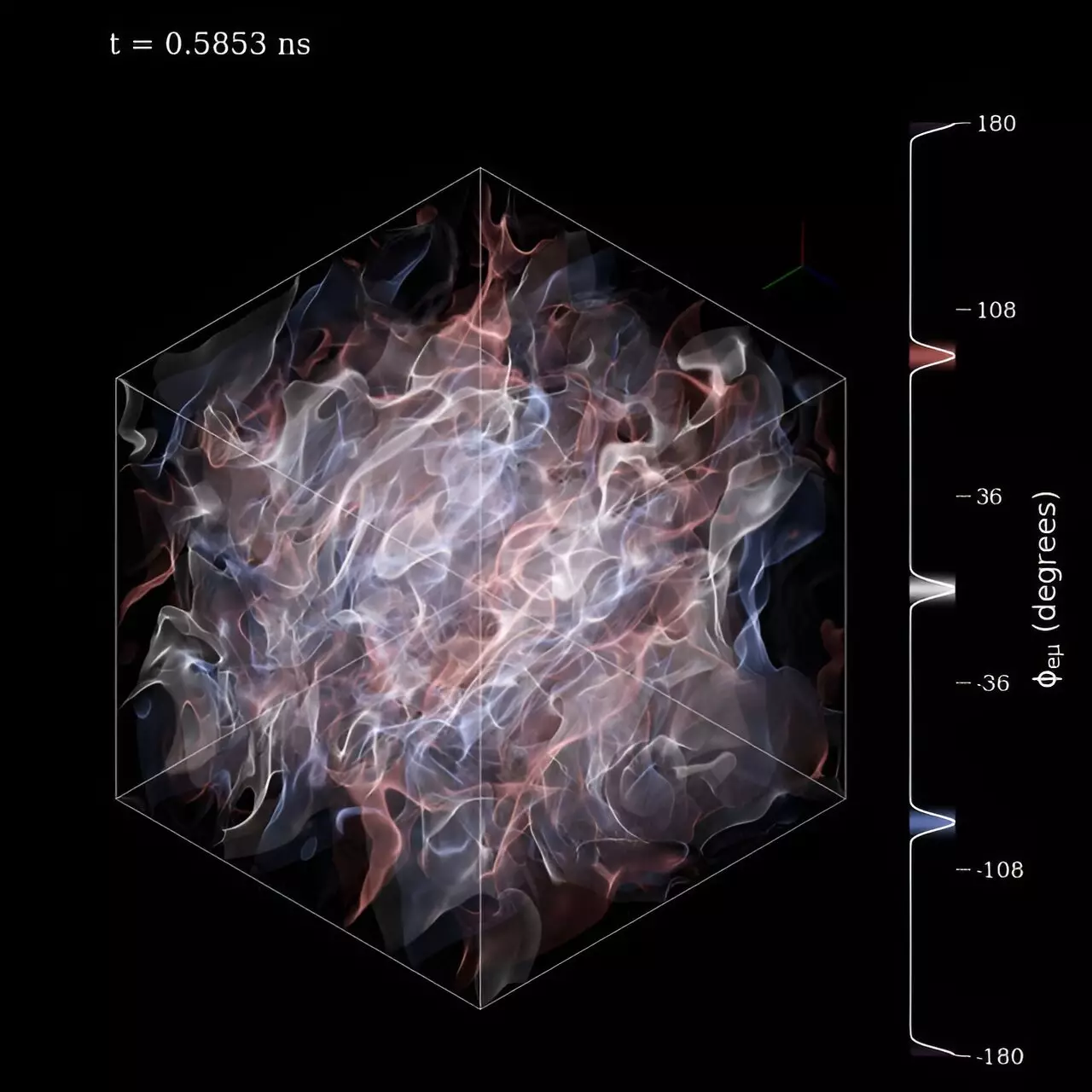Neutrinos, often dubbed the “ghost particles” of the universe, possess a unique characteristic known as “flavor.” This intrinsic quantum trait allows them to oscillate between three distinct states as they traverse through the cosmos. While this behavior presents a fascinating phenomenon, it also introduces significant complications for astrophysicists studying high-energy events like core-collapse supernovae and neutron star mergers. The challenge arises from the necessity to track both the physical trajectory of these elusive particles and their ever-changing flavor states in environments riddled with countless neutrinos.
Tackling Complex Systems: A Novel Approach
Researchers have set out to find innovative solutions to better predict neutrino behavior in these chaotic astrophysical systems. Their strategy involves extending classical models of neutrino transport to incorporate the quantum mechanical nuances of flavor change. This advancement simplifies the complex mathematical framework typically required to describe neutrino dynamics, enabling scientists to manage the daunting task of modeling interactions in environments with an overwhelming number of neutrinos. The research findings are now highlighted in prominent journals, including The Astrophysical Journal and Physics Letters B.
The Significance of Neutrino Interactions in Stellar Events
Neutrinos are not just an afterthought; they carry a significant fraction of the energy released during stellar explosions. Understanding their behavior is crucial for deciphering the rich tapestry of information these cosmic deaths provide, from illuminating the processes that forge heavy elements to unveiling the fundamental physics governing the universe. To fully harness the insights offered by these energetic messengers, scientists must delve deeper into the intricate dance of neutrinos and their interactions during explosive astrophysical phenomena.
Angular Momentum: A New Frontier
Among the most promising avenues for advancing neutrino research is the angular momentum approach. By condensing the vast quantities of neutrino data into a limited set of equations, scientists can encapsulate the total number and flux of neutrinos into manageable quantities. This methodology allows researchers to make predictions regarding flavor transformations, particularly in highly dynamic events like neutron star mergers. The semi-classical angular-moment approach focuses on a specific type of flavor transformation—dubbed “fast-flavor”—whose dynamics require careful angular consideration for accurate predictions.
Encouraging Results Open Doors for Future Exploration
Initial tests of this innovative approach have yielded promising results, effectively capturing the intricacies of neutrino flavor transformations. These early successes warrant continued exploration and enhancement of the method, potentially leading to groundbreaking insights into the behavior of neutrinos within some of the universe’s most tumultuous conditions. There lies immense potential in refining this model to contribute to a deeper understanding of how neutrinos interact and transform, not just in neutron star mergers, but across a multitude of astrophysical processes. The ongoing quest to unlock the myriad secrets held by these enigmatic particles could ultimately redefine our comprehension of cosmic events and their underlying physics.


Leave a Reply